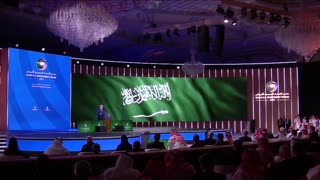Premium Only Content

CONVERTING DNA TO MUSIC
Protein music (DNA music or genetic music) is a musical technique where music is composed by converting protein sequences or genes to musical notes. It is a theoretical method made by Joël Sternheimer, who is a physicist, composer and mathematician.
The scientific community has come to realize that there’s some long-term value in this type of work. Temple, who from that first experiment has created his own algorithmic software to convert data to sound, believes the resulting music can be used to improve research and science communication.
“Sometimes we have thousands of data points from experiments, which is quite hard to look at, but if you can stream through those data points in audio, then you can quickly scan them and listen for outliers and listen for changes in the data,” says Temple. He mentions research in which scholars successfully sonified electrocardiography signals in order to diagnose cardiac diseases: trained cardiologists could spot anomalies with 78 percent accuracy after a short training with the sonification technique.
Temple’s own method consists of assigning each individual DNA “base”—the four building blocks of human DNA, also known as nucleotides, labeled with the letters A, C, T, G—to a musical note. He then takes subsequent pairs of bases, and maps them to a slightly wider collection of notes. Finally, he takes triplets of bases—which in DNA are responsible for converting amino acids—and maps those to notes too. This system produces a series of stacked notes, which can be interpreted as chords. Played in sequence, the chords make music, he says, in a process very similar to the Deamer’s method.
-
 LIVE
LIVE
Russell Brand
1 hour ago"He Can’t Be Bought!” RFK on Trump’s MASSIVE Pharma Cuts - Elon TORCHES Gates On DOGE Deaths – SF582
26,661 watching -
 LIVE
LIVE
Sean Unpaved
1 hour agoLottery Conspiracies, Tatum's Achilles, & the NFL's International Push
896 watching -
 LIVE
LIVE
Akademiks
2 hours agoDay 3/30. Diddy Trial Day 2. CASSIE takes the STAND? the FREeKOFF Details r Revealed. NASTY STUFF
2,708 watching -
 LIVE
LIVE
NEWSMAX
4 hours agoThe Rob Carson Show LIVE (05/13/2025) | Call 1-800-922-6680 | NEWSMAX Podcasts
651 watching -
 1:10:10
1:10:10
Winston Marshall
1 hour agoJimmy Dore: How Trump Will Lose His Populist Base & The Israel-Palestine Debate
17.4K4 -
 1:04:18
1:04:18
Timcast
2 hours agoLiberals OUTRAGED As White South Africans Enter US As Refugees
204K86 -
 LIVE
LIVE
The Charlie Kirk Show
1 hour agoSouth African Refugees + Saudi Arabian Dealmaking | 5.13.25
4,028 watching -
 DVR
DVR
Benny Johnson
3 hours ago🚨Trump Speaking LIVE Right Now with 'World Shattering' Announcement from Saudi Arabia: '$1 Trillion'
105K78 -
 1:00:41
1:00:41
The White House
10 hours agoPresident Trump Participates in a U.S.-Saudi Investment Forum
40.6K11 -
 DVR
DVR
The Shannon Joy Show
2 hours ago🔥🔥Big Pharma & Big Tech Are Learning … Don’t Mess With Big Mom! The #MAHA Revolt Continues - With Special Guest Sasha Latypova!🔥🔥
21.8K5